A block m1 strikes a stationary block m3 inelastically. Another block m2 is kept on m3. Neglecting the friction between all contacting surfaces, calculate the fractional decrease in KE of the system in collision.
Impact takes place between m1 and m3 horizontal. Since m2 is kept on m3 and all the surface in contact are smooth, friction does not act between m2 and m3 during the displacement of m3 in the impact. Even though there is a friction between m2 and m3, which is very less than the impace force, the frictional force is assumed as non-impulsive force here.
Since the impact between m1 and m2 is inelastic. m1 and m3 will move together toward right and m2 will not due to the absence of friction.
The velocity of the combined mass =v′=m1vm1+m3
|△KE|KE=12m1v2−12(m1+m3)v'212m1v2
=1−(m1+m3m1)(v′v)2
=1−(m1+m3m1)(m1m1+m3)2
=1−m1m1+m3=m3m1+m3
If m2 and m3 are rigidly attached, both together behave as a single mass (m2+m3) and the answer would have been m2+m3m1+m3+m3
Topper's Solved these Questions
- BOOK - CENGAGE PHYSICSCHAPTER - CENTRE OF MASSEXERCISE - Subjective23videos
CENTRE OF MASS
- BOOK - CENGAGE PHYSICSCHAPTER - CENTRE OF MASSEXERCISE - Single Correct141videos
CENTRE OF MASS
- BOOK - CENGAGE PHYSICSCHAPTER - CENTRE OF MASSEXERCISE - Exercise 1.223videos
CENTRE OF MASS
- BOOK - CENGAGE PHYSICSCHAPTER - CALORIMETRYEXERCISE - Solved Example13videos
CALORIMETRY
- BOOK - CENGAGE PHYSICSCHAPTER - DIMENSIONS & MEASUREMENTEXERCISE - Integer2videos
DIMENSIONS & MEASUREMENT
Similar Questions
In fig Block m2 is loaded on block m1 . If there is no relative sliding between the block and the inclined plane is smooth , find the friction force between the block
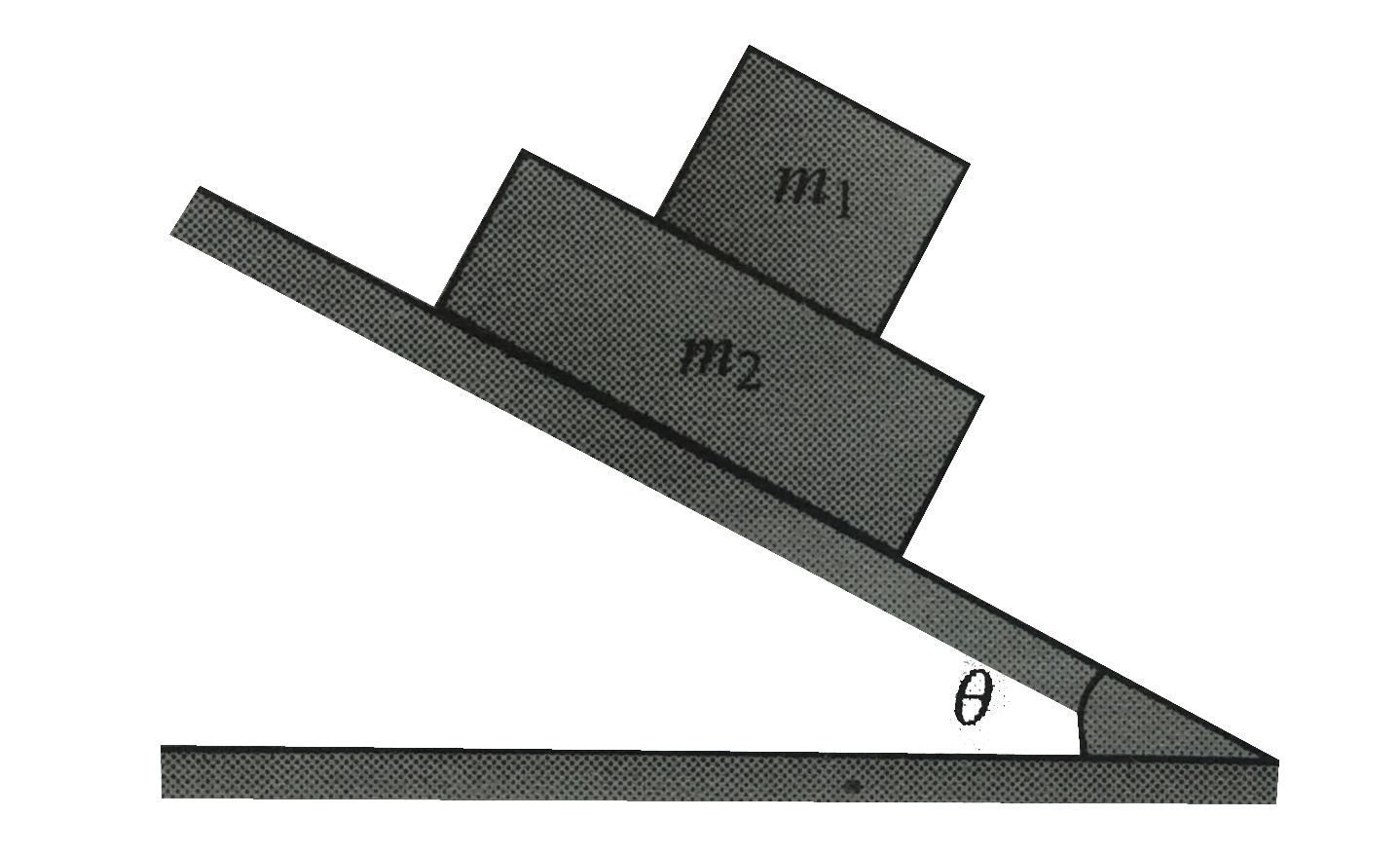 View Solution
View SolutionIn fig Block m2 is loaded on block m1 . If there is no relative sliding between the block and the inclined plane is smooth , find the friction force between the block
 View Solution
View Solution
Knowledge Check
- Question 1 - Select One
A block m1, strikes a stationary blocks m3 inelastically. Another block m2, is kept on m3. Neglecting the friction between all contacting surfaces, the fractional decrease of KE of the system in collision is
Am1m1+m2+m3Bm1m2+m3Cm3m1+m3Dm2+m3m1+m2+m3 - Question 2 - Select One
A force F accelerates a block of mass m on horizontal surface. The coefficient of friction between the contact surface is . The acceleration of m will be -
AF−μmgMBzeroCmay be (A) or (B)DNone of these - Question 3 - Select One
A block of mass m is stationary on a horizontal surface. It is connected with a string which has no tension. The coefficient of friction between the block and surface is m . Then , the frictional force between the block and surface is:
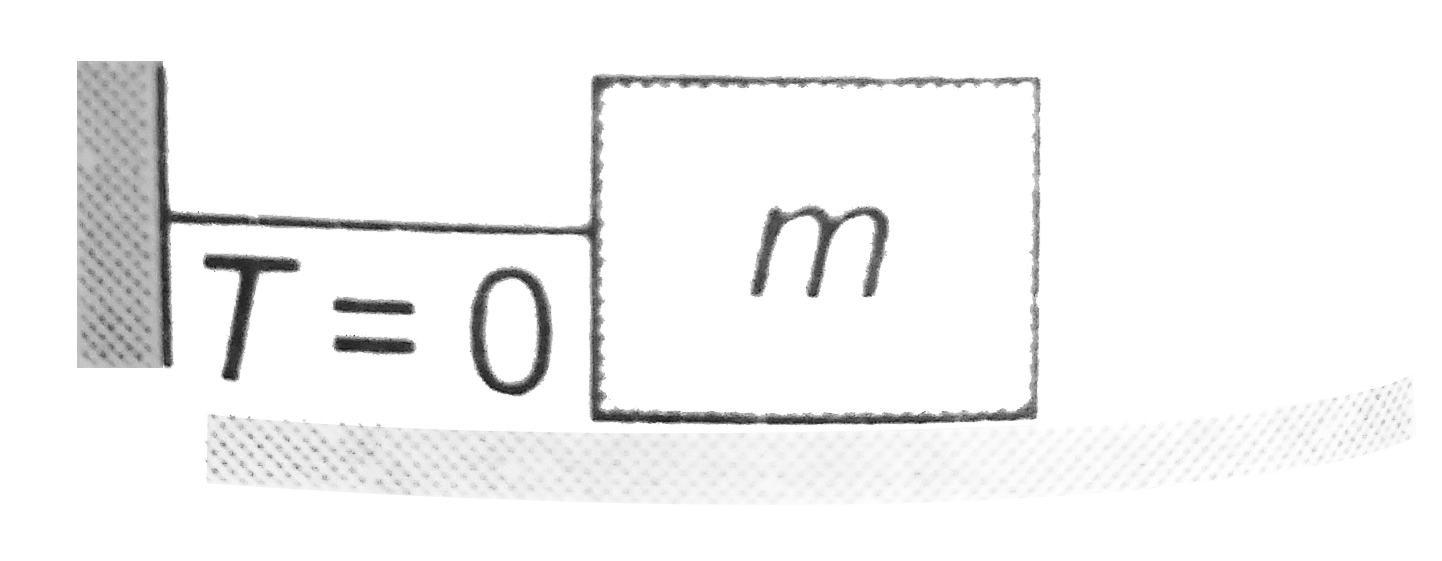 AzeroBμmgCμmgμDNone of these
AzeroBμmgCμmgμDNone of these
A block of mass 2 m collides,elastically with a masss m kept at rest. Friction exists between the block B ,and surface with coefficientμ=0.3, whereas no.friction exists between block A and the surface.
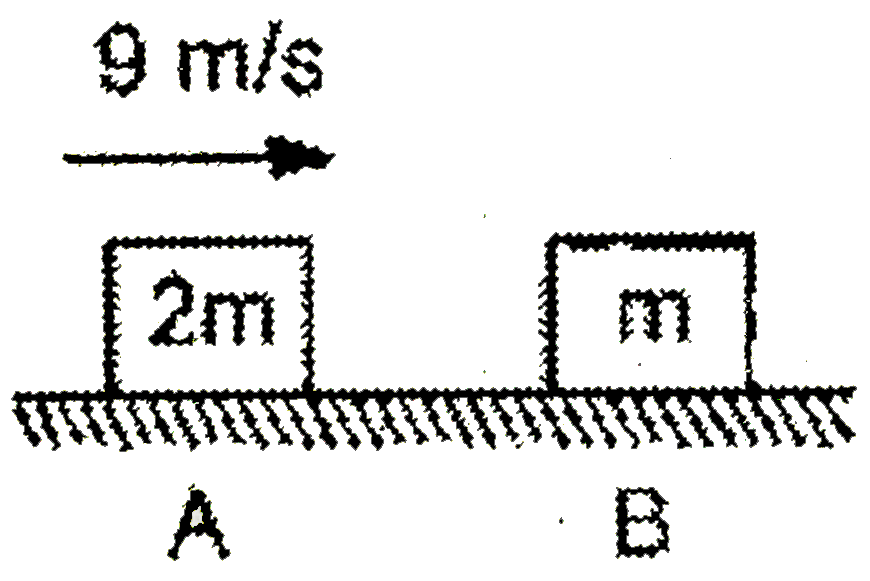
After how much time collision between the blocks will not take place practically:View SolutionA block of mass 2 m collides,elastically with a masss m kept at rest. Friction exists between the block B ,and surface with coefficientμ=0.3, whereas no.friction exists between block A and the surface.
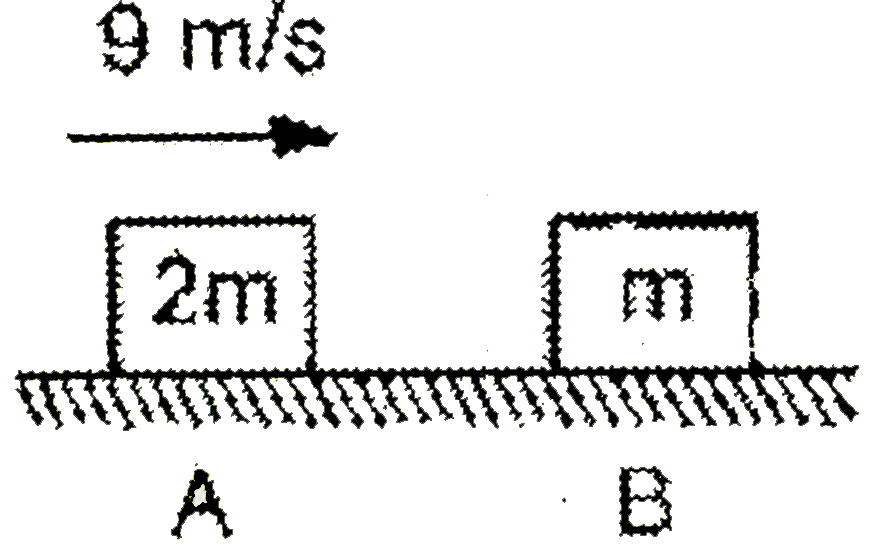
How many collision are possible between the blocks?View SolutionA block of mass m is kept over another block of mass M nd the system rests on a horizontal force F acting on the lower block produces an accelertion F2(m+M) in the system the two blocks always move together. A. Find the coefficient of kinetic frictioin between the bigger block and th horizontal surface. b. find the frictional force acting on the smaller block. c. Find the work done by the force of friction on the smaller block by the bigger block during a displacement d of the system.
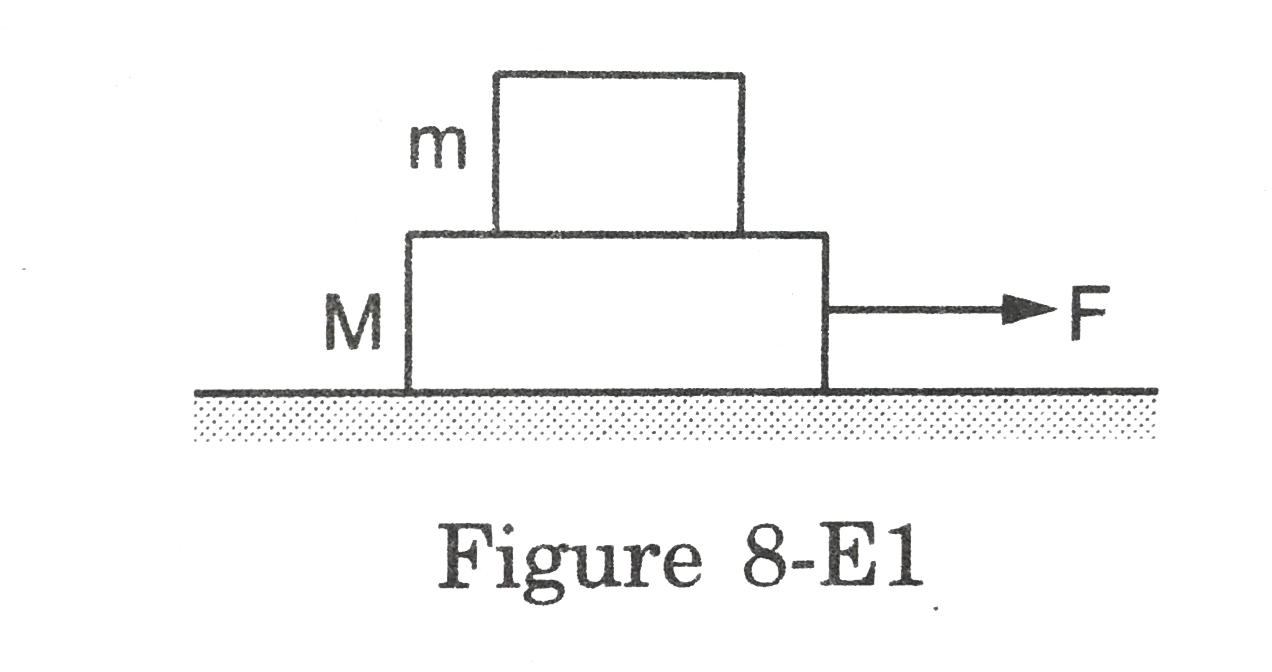 View Solution
View SolutionA block of mass m is kept over another block of mass M nd the system rests on a horizontal force F acting on the lower block produces an accelertion F2(m+M) in the system the two blocks always move together. A. Find the coefficient of kinetic frictioin between the bigger block and th horizontal surface. b. find the frictional force acting on the smaller block. c. Find the work done by the force of friction on the smaller block by the bigger block during a displacement d of the system.
 View Solution
View SolutionCalculate angle of friction between wedge and block system is at rest M coefficient of friction between wedge and block.
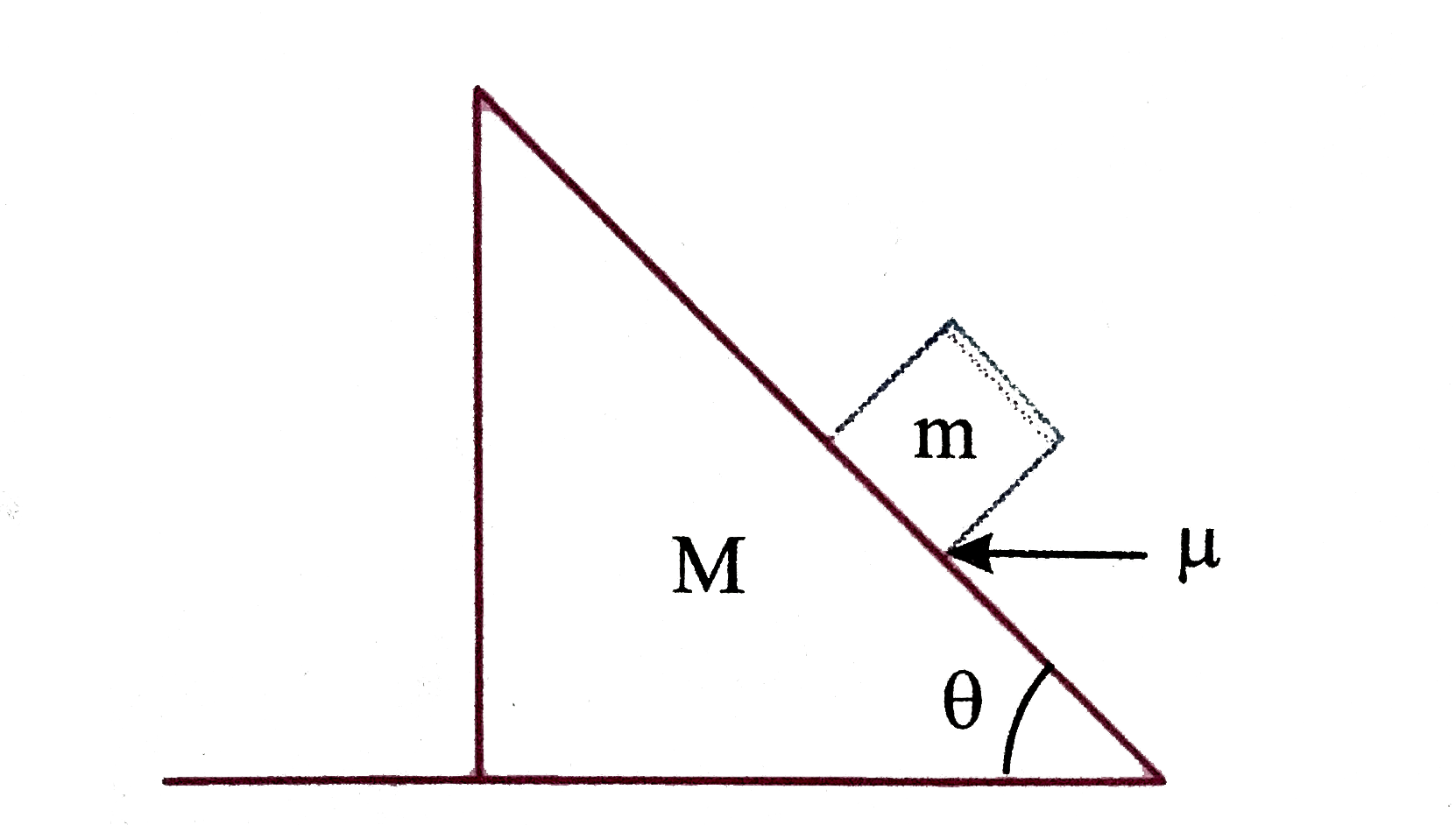 View Solution
View Solution

